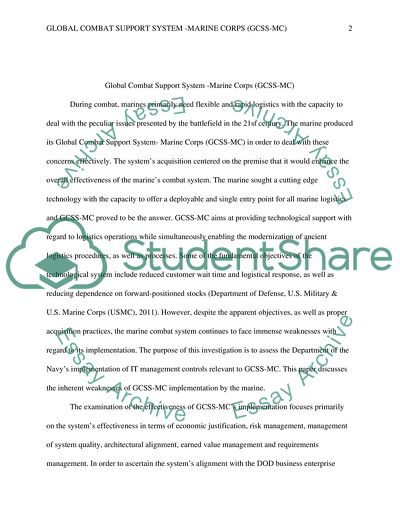Cite this document
(Global Combat Support System Marine Corps Research Paper, n.d.)
Global Combat Support System Marine Corps Research Paper. https://studentshare.org/technology/1787448-global-combat-support-system-marine-corps-gcss-mc
Global Combat Support System Marine Corps Research Paper. https://studentshare.org/technology/1787448-global-combat-support-system-marine-corps-gcss-mc
(Global Combat Support System Marine Corps Research Paper)
Global Combat Support System Marine Corps Research Paper. https://studentshare.org/technology/1787448-global-combat-support-system-marine-corps-gcss-mc.
Global Combat Support System Marine Corps Research Paper. https://studentshare.org/technology/1787448-global-combat-support-system-marine-corps-gcss-mc.
“Global Combat Support System Marine Corps Research Paper”. https://studentshare.org/technology/1787448-global-combat-support-system-marine-corps-gcss-mc.


